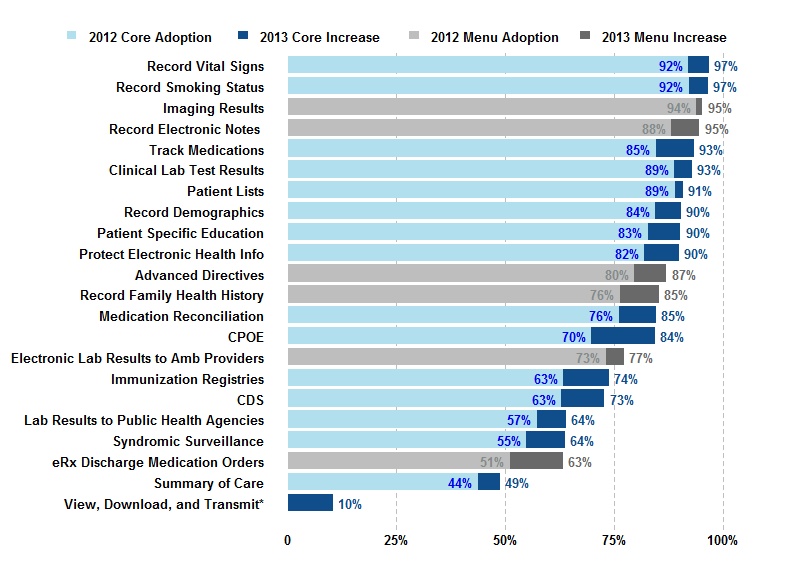
Stage Two of the Meaningful Use program consists of 22 core and menu objectives. A subset of hospitals will be eligible to begin attesting to these Stage 2 objectives in 2014. In 2013, adoption rates for 20 of these objectives were over 60 percent.…
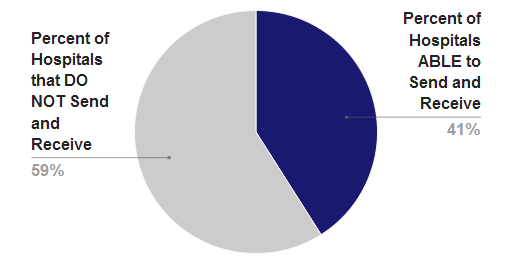
Approximately 4 in 10 hospitals (41%) report that providers at the hospital are able to send and receive secure electronic messages containing patient health information (e.g., medications) to and from sources outside of the organization or hospital…
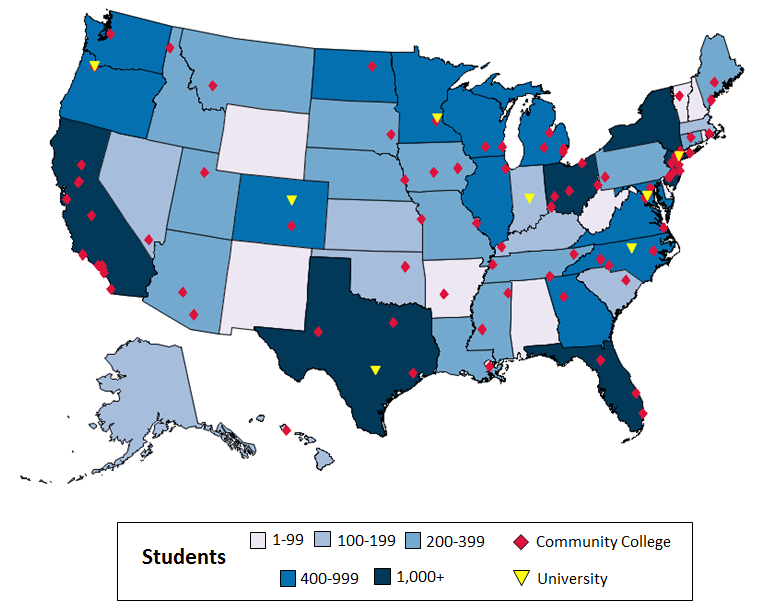
HITECH funded two distinct health IT workforce training programs: the University-Based Training Program and Community College Consortia Program. In total the two programs trained 21,437 students from all 50 states, the District of Columbia, Puerto Rico…
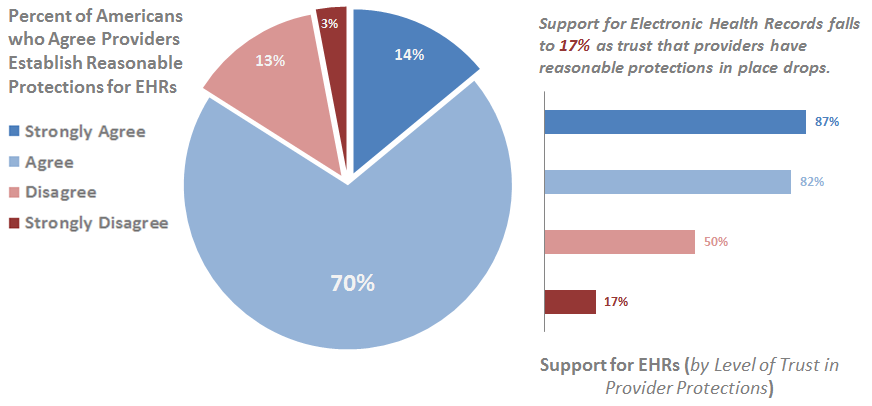
As the adoption of electronic health records (EHRs) and health information exchange (HIE) expands, and patient health information is increasingly stored and shared by providers electronically, it is important to monitor patient trust in providers'…
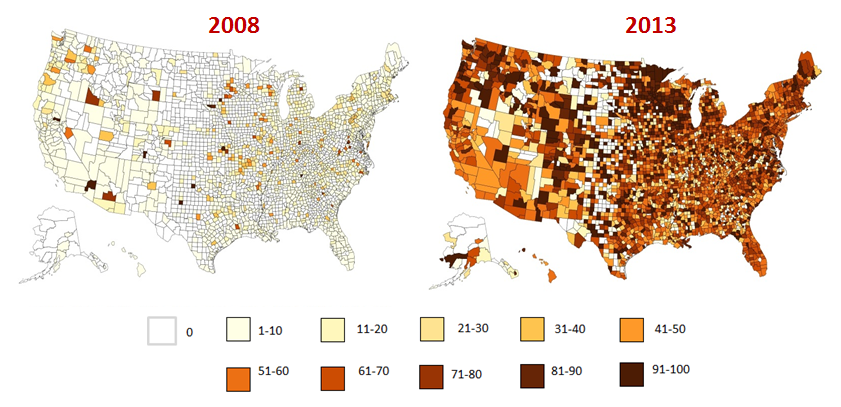
In the past five years, physician Electronic Health Record (EHR) adoption has surged, reaching all corners of the country. The percentage of physicians e-Prescribing via an EHR has accelerated from 7 percent in December 2008 to 66 percent as of December…

Hospitals that began the Meaningful Use program in 2011 were 6 percentage points more likely to select at least one public health measure without an exclusion by their third year of participation (2013), compared to their first year of participation (…
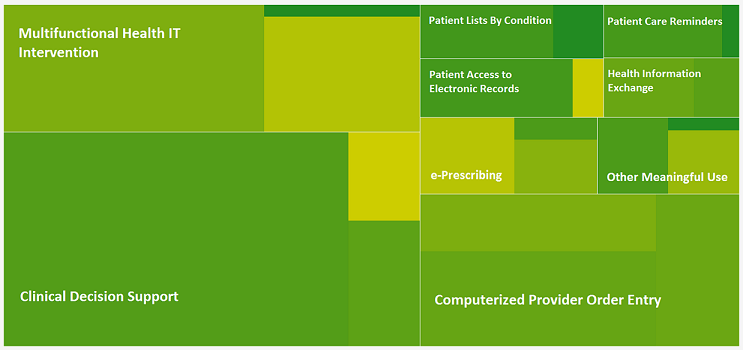
The 'Updated Systematic Review' reviews the January 2010 to August 2013 health IT literature to examine the effects of health IT across three aspects of care -- efficiency, quality, and safety. This report updates previous systematic reviews of…
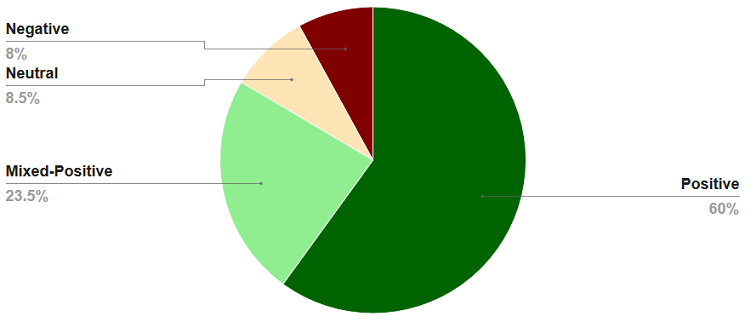
Graphic visualizes Health IT evaluation studies, 2007-2013 (n=493), related to the impact of Meaningful Use functionality on the quality, efficiency, and safety of care (or aspects of care). Positive defined as health IT improved key aspects of care but…
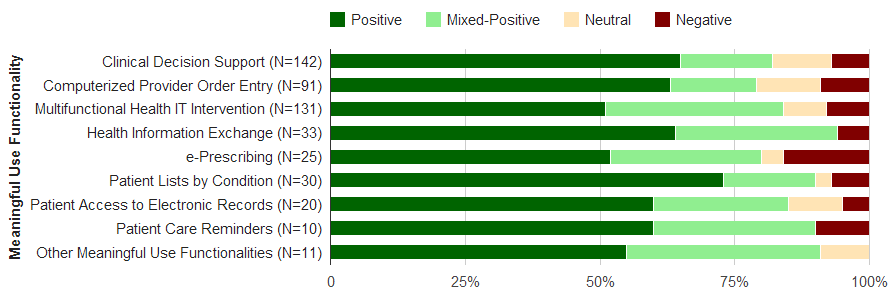
Graphic visualizes Health IT evaluation studies, 2007-2013 (n=493), related to the impact of Meaningful Use functionality on the quality, efficiency, and safety of care (or aspects of care). Positive defined as health IT improved key aspects of care but…

Approximately 3 in 10 individuals (32%) reported that clinical laboratories had provided them direct access to test results, either in paper or electronic format, during the past 12 months in 2012.
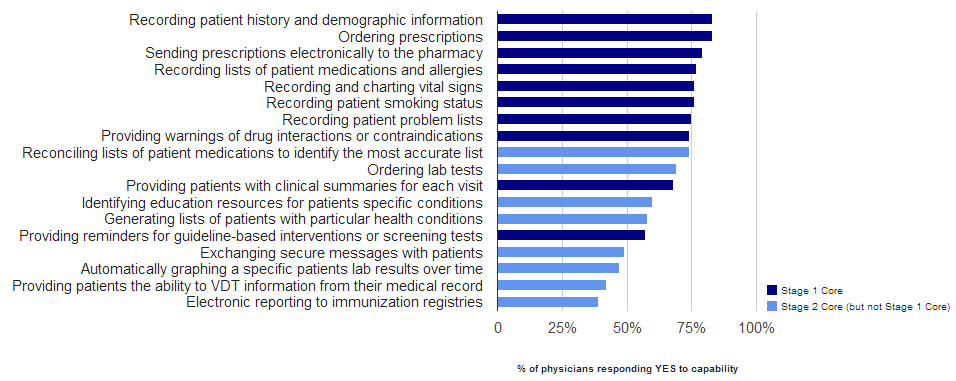
In 2013, physician adoption rates for computerized capabilities related to selected Meaningful Use Stage 1 and Stage 2 objectives ranged from 39% to 83%. About three-quarters or more of physicians had adopted computerized capabilities for recording key…
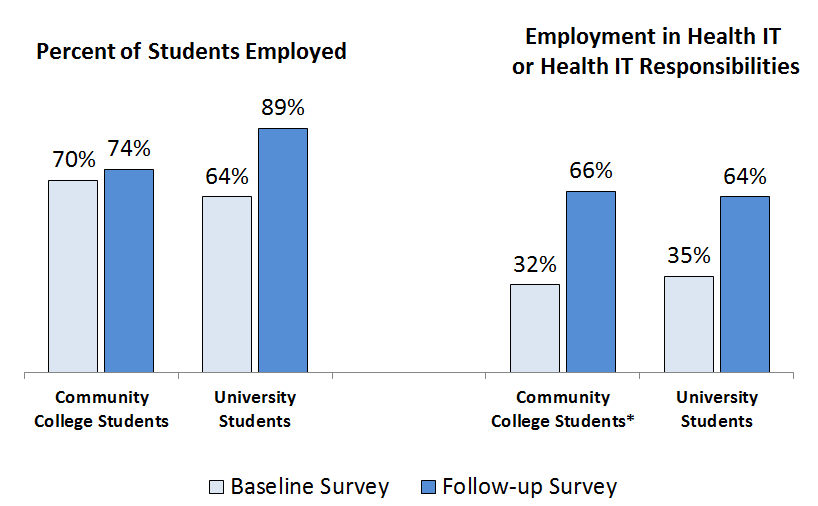
Over three-fourths of students trained by the HITECH Workforce Programs were employed within six months of completing training. Moreover, two-thirds of all trained professionals were employed in health IT or had health IT related responsibilities.

Hospitals continue to demonstrate increasing capability to meet Meaningful Use objectives. Click the radar chart to see which meaningful objectives hospitals are meeting the fastest.

